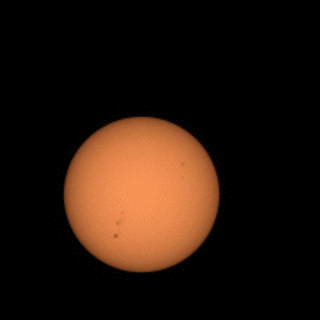
What is a Solar Eclipse?
- 20th Oct 2022
- Author: Ed Kellond-Turner
What is a Solar Eclipse?
A solar eclipse happens when the Moon passes between the Sun and the Earth. It casts a shadow on the Earth, either full or partially blocking the Sun’s light in some areas.
There are three main types of solar eclipse:
- Total solar eclipse, where the Moon completely covers the Sun’s face.
- Partial solar eclipse, where the Moon passes in front of a section of the Sun, with some of the Sun still being visible.
- Annular solar eclipse, where the Moon is furthest from Earth, and therefore cannot cover the entire disk of the Sun.
During a solar eclipse the Moon casts two shadows onto the Earth:
- The umbra, which is the dark centre of the Moon’s shadow. This is responsible for total eclipses.
- The penumbra, which is the shadow surrounding the umbra. This is responsible for partial eclipses.
If you want to view a total eclipse, you’ll have to be quick – totality lasts for only a few minutes!
Fun fact: even though the Moon is much smaller than the Sun, it still manages to cover our star entirely during a total solar eclipse. This is because even though the Sun is 400 times bigger than the Moon, it is also 400 times further away from Earth, meaning the Sun and Moon look the same size in our sky!

Why Don't We See an Eclipse Every Month?
If the Moon orbited the Earth in the same plane as the Earth orbits the Sun, we could expect to see at least two eclipses every month; one solar eclipse at every new moon, and one lunar eclipse at every full moon. The reason this doesn’t happen is the Moon’s orbit is inclined to Earth’s orbit around the Sun by about five degrees, meaning the Moon seems to wobble above and below the Sun during its orbit.
This tilted orbit also means there can be a partial solar eclipse without an accompanying total solar eclipse.
There can be as many as five solar eclipses every year, with a total eclipse occurring around every 18 months. Being able to see these eclipses however depends on your location, with any one place only seeing a total solar eclipse every 400 years.
Eclipses On Other Planets
Generally speaking, an eclipse is just when one celestial body moves into the shadow cast by another celestial body. This means solar eclipses can occur on other planets, not just our own!
The Galilean moons of Jupiter for example regularly eclipse the Sun, creating a shadow across the Jovian surface that has been observed from Earth. (Because these moons are smaller in apparent diameter that the solar disc, the proper term would be a transit). The closest Galilean moon, Io, causes an eclipse or transit every 42 hours, and occasionally there can be as many as three shadows cast on Jupiter’s surface.
On 2 April 2022, NASA’s Perseverance rover captured footage of Mars’ moon Phobos transiting across the face of the Sun. Unlike the Moon, Phobos is too small to completely cover the solar disk.
When to View an Eclipse
When viewing a solar eclipse, you should never look at it directly, as even a glimpse of the Sun can seriously harm your eyes. Instead, you can indirectly view the solar eclipse by casting the image onto a piece of paper using a pin-hole camera, or by using specialised eclipse glasses.
Here is a list of the upcoming solar eclipses visible in the UK:
- 25 October 2022: Partial Solar Eclipse
- 8 April 2024: Partial Solar Eclipse
- 29 March 2025: Partial Solar Eclipse
- 12 August 2026: Near Total Solar Eclipse
- 2 August 2027: Partial Solar Eclipse
- 26 January 2028: Partial Solar Eclipse
The next total solar eclipse visible from the UK will be on 23 September 2090, lasting for just over 2 minutes.
Author: Ed Turner is a Space Communications Presenter at the National Space Centre.
Illustrator: Becca Pankiewicz is a Junior Graphic Designer at the National Space Centre.
Editor: Dhara Patel is a Space Expert at the National Space Centre.
Full references / credits:
(Banner image) A solar eclipse. Credit: NASA
(1) What is a solar eclipse? Credit: © National Space Centre
(2a) Total solar eclipse. Credit: © National Space Centre
(2b) Partial solar eclipse. Credit: © National Space Centre
(2c) Annular solar eclipse. Credit: © National Space Centre
(2d) Top tips for viewing an eclipse. Credit: © National Space Centre
(4b) Mars' moon Phobos crosses the face of the Sun, captured by NASA’s Perseverance rover on Mars. Credit: NASA/JPL-Caltech/ASU/MSSS/SSI
(5) How often do solar eclipses happen? Credit: © National Space Centre









